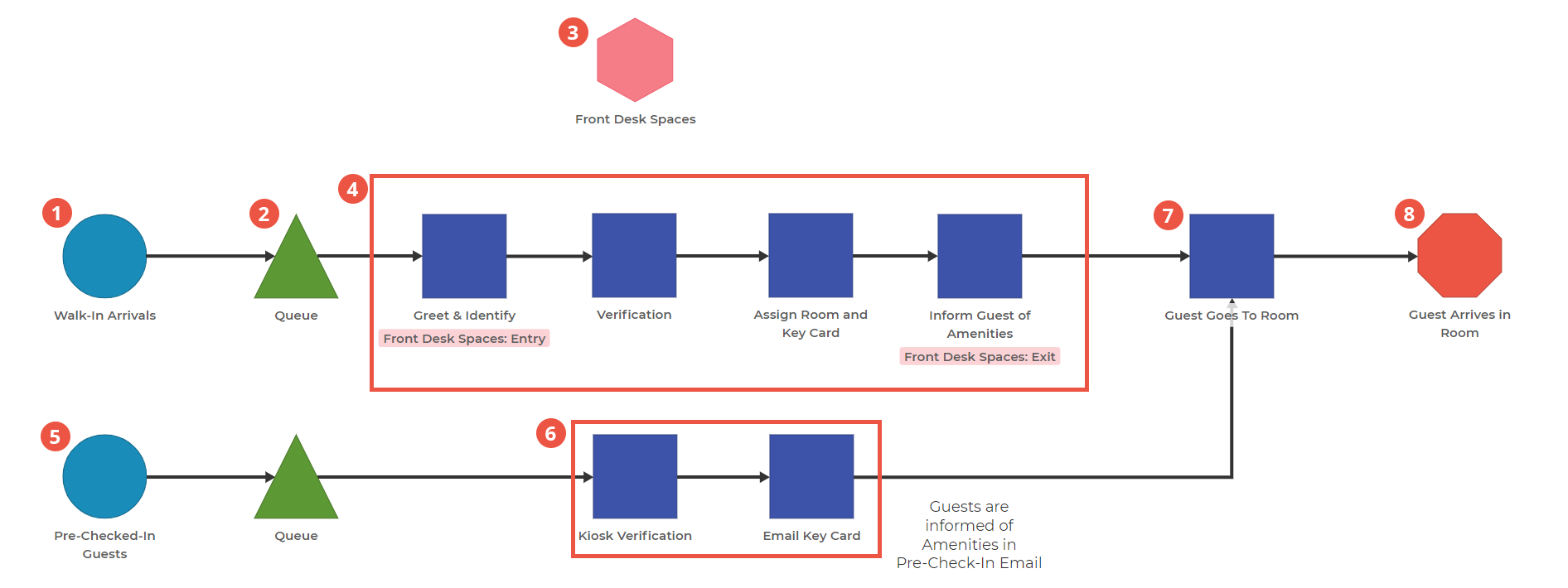Hotel Check In, Two Ways
Ticket Lines. This process enables you to experiment with different scenarios for ticketing processes, understanding how your process may need to react to different types of demand.

0. This model has two items: Walk-In Guest and Mobile Guest.
1. Generate arrivals of Walk-In Guests. This Demand Block simulates the arrival of guests checking in at the desk.
2. Guests wait in line if the front desk is occupied. This Queue Block represents the line before being assisted at the desk.
3. Limit the spaces at the front desk. This Core Pull Block creates an "area" of limited capacity. In this case, we have one space available at the front desk to check in guests, so our Core Pull WIP Capacity is set to 1. This means only one guest can be within the space of Greet & Identify and Inform Guest of Amenities.
4. Model the steps at the front desk. This sequence of Activity Blocks can be adjusted to the length of time for each task.
5. Generate Mobile Guests for Pre-Check-In. This Demand Block models the unique demand for Mobile Guests.
6. The steps are reduced for the Pre-Check-In case. By only requiring a kiosk, the Pre-Checked-In guests may have a shorter time to get to their room.
7. Guests go to their rooms. While not strictly necessary for the check-in process, a guest will only be satisfied once they finally make it to their room. This Activity holds 90 people just to be sure there are no backups here.
8. Guest arrives in their room. This Exit Block signifies the end of the process.
A model like this might be used to justify adding a Pre-Check-In Process or show that there is little effect on the outcomes for guests. By modeling the process, you can play with different scenarios based on your data and experiences to inform business decisions.
Was this helpful?
